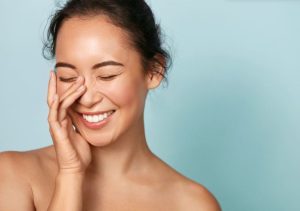Dermaplaning is a popular exfoliation treatment that leaves your skin feeling smooth, radiant, and refreshed. This non-invasive procedure involves the use of a sterile surgical scalpel to gently remove dead skin cells and peach fuzz. While the benefits are immediately visible, it’s crucial to take care of your skin afterward to maintain the glowing results and avoid irritation.
After dermaplaning, your skin is more sensitive and susceptible to damage, so understanding how to properly protect it is essential.
Here are three key steps to ensure your skin remains healthy and glowing after dermaplaning.
The Importance of Sunscreen Post-Dermaplaning
One of the most vital steps in protecting your skin after dermaplaning is wearing sunscreen. During the procedure, the outermost layer of your skin is gently exfoliated, leaving it more exposed and vulnerable to the sun’s harmful UV rays. Without proper sun protection, your skin can easily burn, become discolored, or develop sunspots, which can compromise the benefits of dermaplaning. It would be best to avoid direct sun exposure for at least 24-48 hours post-dermaplaning.
It’s essential to apply a broad-spectrum sunscreen with an SPF of 30 or higher every day, even if you’re not planning to spend much time outside. For best results, opt for a sunscreen that provides both UVA and UVB protection. UVA rays can prematurely age your skin, while UVB rays can cause sunburn, both of which are more damaging when your skin is freshly exfoliated.
If you’re heading outside, don’t forget to reapply sunscreen every two hours, especially if you’re swimming or sweating. You can also choose a mineral sunscreen with ingredients like zinc oxide or titanium dioxide, which are less likely to irritate sensitive skin. Your skin will thank you for taking this extra step to shield it from further damage and maintain the smooth, fresh look you worked hard to achieve.
Using Hydrating and Barrier-Repair Products
After dermaplaning, your skin may feel drier than usual. Exfoliating removes a layer of dead skin cells, which can leave your skin feeling a bit stripped of its natural moisture. To prevent dryness, it’s essential to use hydrating products that help replenish moisture and strengthen the skin’s barrier.
Look for moisturizers that contain ingredients like hyaluronic acid, glycerin, and ceramides. Hyaluronic acid helps draw moisture into the skin, while glycerin is an excellent humectant that attracts water to the skin’s surface. Ceramides are lipids that help form the skin’s natural barrier, locking in moisture and keeping irritants out. These ingredients are particularly helpful for post-dermaplaning skin, as they help restore hydration and prevent your skin from becoming overly dry or flaky.
You may also want to incorporate a calming serum or facial oil into your routine, especially if your skin tends to be sensitive. Look for oils that are non-comedogenic (won’t clog your pores) and have soothing properties, such as rosehip oil or jojoba oil. These oils not only hydrate but also help with skin healing, making them ideal for post-dermaplaning care.
Remember to use these products gently, as your skin may be more delicate than usual. Avoid harsh rubbing or tugging, and instead, apply your products in a gentle, upward motion to avoid any irritation.
Avoiding Environmental Irritants
Your skin is more vulnerable immediately following dermaplaning, and environmental irritants can worsen the situation. Factors like pollution, strong winds, smoke, and other airborne particles can cause redness, dryness, and breakouts. It’s important to minimize your exposure to these irritants during the first few days after your dermaplaning session.
If possible, try to stay indoors during peak pollution times or on days with poor air quality. If you do have to go outside, wearing a wide-brimmed hat can offer some physical protection, along with sunscreen. Additionally, try to avoid environments with excessive dust or smoke, as these can irritate your freshly exfoliated skin and cause flare-ups.
Another environmental factor to watch out for is temperature extremes. Both hot and cold weather can be harsh on the skin, especially right after dermaplaning. Hot temperatures can cause sweating and irritation, while cold, dry air can sap moisture from your skin. When exposed to such conditions, your skin may feel tight and uncomfortable, which could undo some of the benefits of dermaplaning.
Consider adjusting your routine to protect your skin from these elements. Use a humidifier in your home to prevent dry air from affecting your skin, and always carry a hydrating facial mist or serum to refresh your skin throughout the day. Gentle face wipes or refreshing face sprays can also be helpful to cleanse away pollutants without irritating your skin. Cleaning your bedsheets, pillow cases, and makeup brushes more frequently can also prevent bacterial buildup on the freshly exfoliated skin.
Taking care of your skin after dermaplaning is essential for keeping it glowing and healthy. By following these steps—applying sunscreen daily, using hydrating and barrier-repairing products, and protecting your skin from environmental irritants—you’ll help preserve the smooth, radiant results of your dermaplaning session.
Remember, your skin is more sensitive for a short period after the procedure, but with a little extra TLC, it can remain calm, hydrated, and beautiful.
Dermaplaning is a great way to enhance your skin’s appearance, but post-care is just as important to maintain those results. Treat your skin with care, and you’ll enjoy the lasting benefits of smooth, glowing skin. Schedule a consultation with us today!




